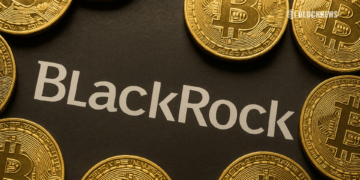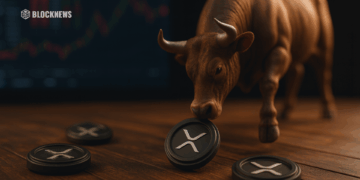- Bitcoin users spent a record $2.4 million in fees on block 840,000 – the fourth Bitcoin halving block
- The high fees were driven by users rushing to inscribe rare satoshis and create new tokens via the Runes Protocol on this historic block
- The halving block became the most expensive block ever mined, with total fees of around $2.4 million paid to the miner in addition to the reduced 3.125 BTC block reward
Bitcoin users spent a record $2.4 million in fees trying to etch rare tokens onto the latest halving block, making it the priciest block ever mined.
Frenzy to Inscribe Rare Assets on Halving Block
The 2024 halving block has gone down as the most expensive block ever mined in Bitcoin’s history, with users scrambling to inscribe rare assets via the new Runes Protocol. Bitcoin users spent a staggering 3,767 BTC ($24 million) in fees to nab their share of limited space on the fourth-ever Bitcoin halving block.
At 12:09 am UTC on April 20, Bitcoin miner ViaBTC produced the 840000th block, triggering the automated protocol that cuts miner rewards by 50% from 6.25 BTC to 3.125 BTC per block. Block 840000 rapidly became the most sought-after piece of digital real estate in Bitcoin’s history.
Including the miner subsidy of 3,125 BTC, a total of 4,082 BTC (over $26 million) was paid to Bitcoin miner ViaBTC for producing the halving block. The record-breaking fees were attributed to users racing to inscribe and etch rare satoshis on the halving block, with much of the activity stemming from a frenzy around Bitcoin developer Casey Rodarmor’s new Runes Protocol which went live at the same time as the halving.
How Runes Work
Runes have been marketed as a more efficient way to create new tokens on the Bitcoin network compared to the BRC-20 token standard, an Ordinals-based method for creating Bitcoin-based tokens. Like BRC-20s, Runes leverages the Bitcoin network and pays fees in Bitcoin to create new tokens.
However, the similarities end there. The major difference between Runes and BRC-20s is that Runes utilizes an Unspent Transaction Output (UTXO) model to etch new tokens on Bitcoin. This stands in contrast to the inscription account model used by Ordinals, according to a protocol explainer from Rodarmor.
Inscription Frenzy Offsets Halving Drop
In an April 20 post, pseudonymous Ordinals developer Leonidas claimed that the fees on the five most recent Bitcoin blocks following block 840000 had surpassed the Coinbase reward. “Runes degens have single-handedly offset the drop in miner rewards from the halving,” wrote Leonidas.
A total of $382 million in fees (excluding miner subsidies) was spent on the five blocks following the halving, according to aggregated data from mempool.space.
The Battle for Epic Satoshis
Outside of the battle to inscribe one of the first Runes, Bitcoin mining pools were also vying to grab what’s known as an “epic satoshi.” An epic satoshi is the very first satoshi, the smallest possible denomination of Bitcoin, mined on the halving block.
On April 15, Trevor Owens, the managing partner at The Bitcoin Frontier Fund, wrote that he was willing to put up a bounty of between $500,000 and $1 million to buy out the first Bitcoin block.
Amid the chaos, pseudonymous trader Hsaka posted a meme that summed up much of the wider sentiment towards the halving event – a brief moment of celebration followed by an immediate return to business as usual.
Peter Schiff Throws Shade
Outspoken Bitcoin critic Peter Schiff also took to Twitter to throw some shade at Bitcoiners amid the halving event. “I think halving is an appropriate name for what’s happening as soon Bitcoin HODLers will experience a halving of their net worths,” said Schiff.
Conclusion
The 2024 Bitcoin halving block triggered a frenzy of activity as users battled to inscribe rare digital assets on the blockchain. Despite the halving cutting miner rewards in half, over $2.4 million in fees were spent on the block – making it the most expensive ever mined. The activity was driven by hype around new token protocol Runes, with traders racing to mint rare tokens on the historic block.














